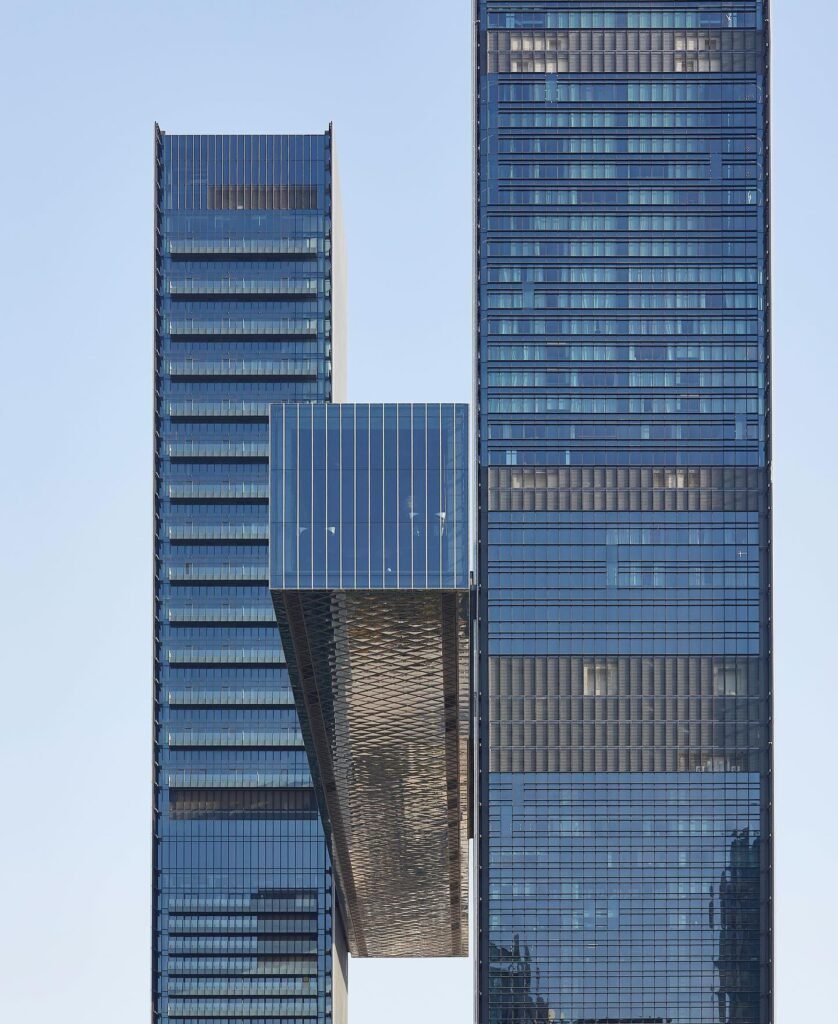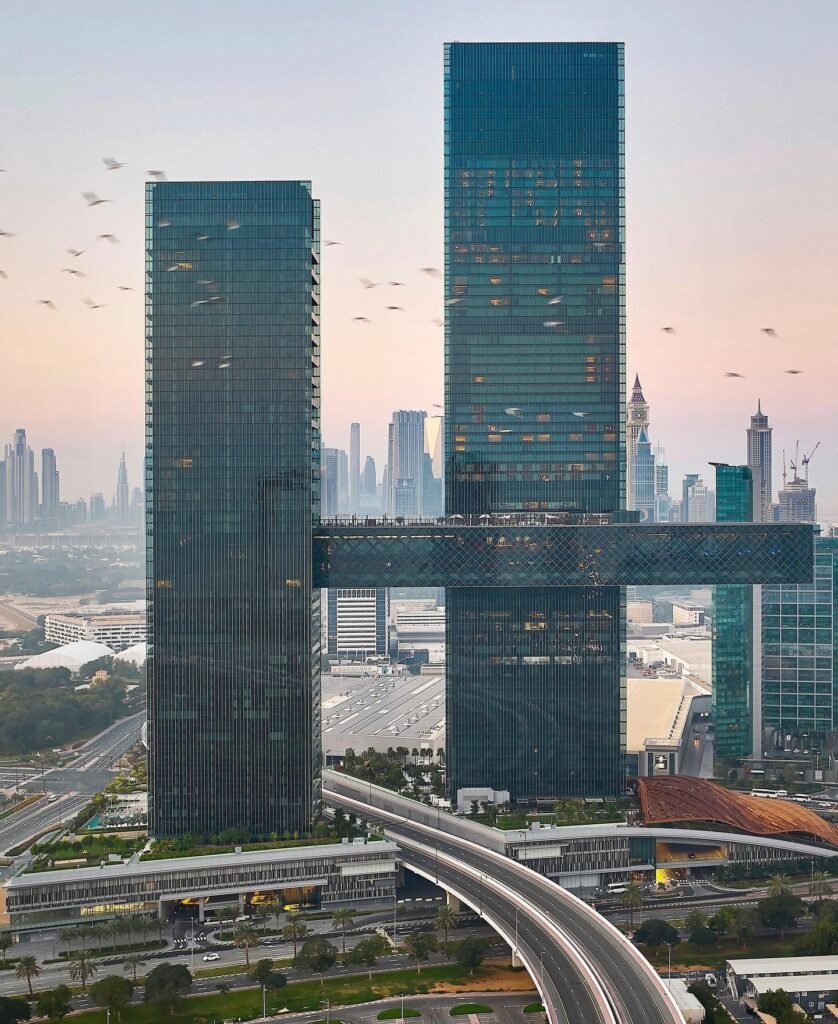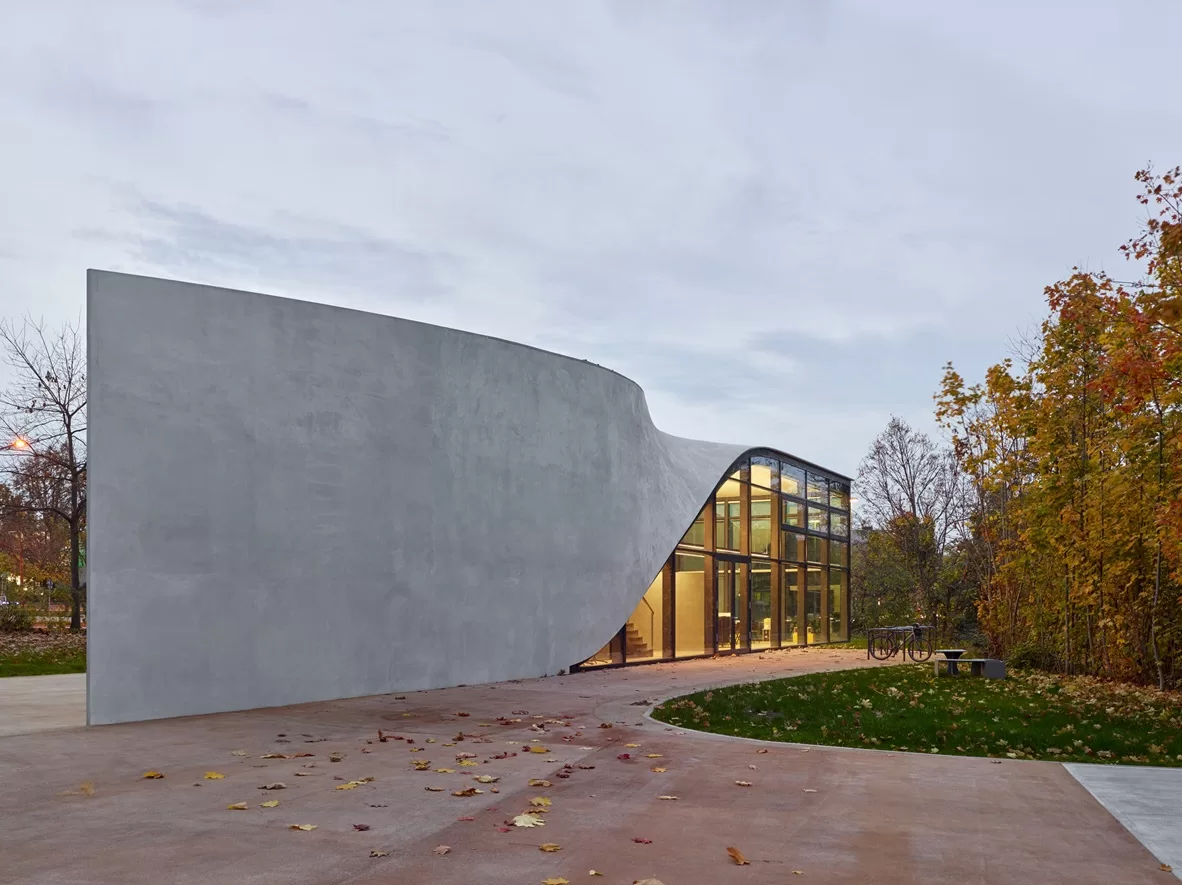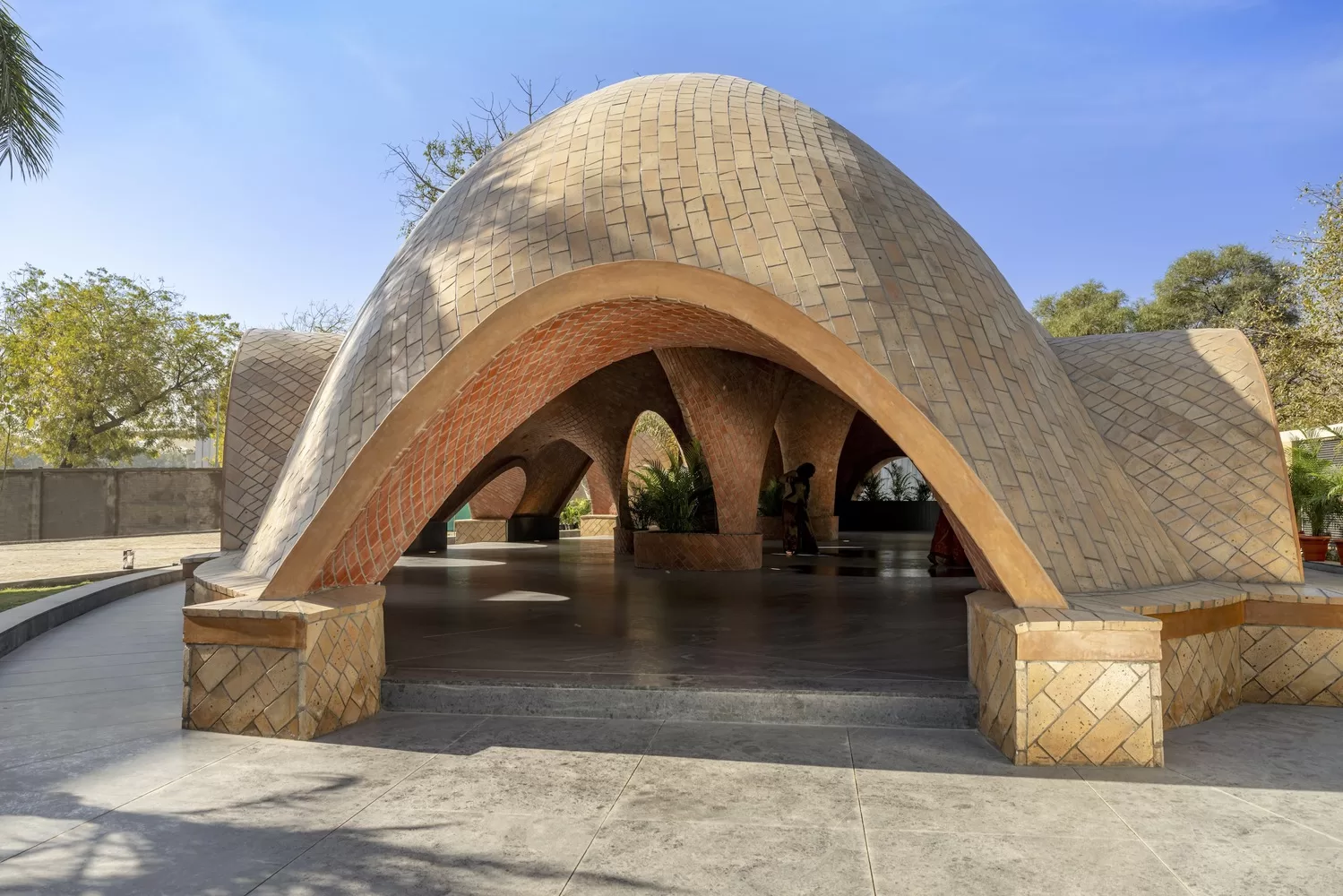Dubai’s One Za’abeel development has completed the construction of the world’s longest cantilever, extending from the midpoint between two skyscrapers, as part of the mixed-use project designed by Japanese studio Nikken Sekkei.
The cantilever, measuring 67.5 meters, is a key element of The Link, a longer horizontal structure suspended 100 meters above a six-lane highway and featuring a massive infinity pool on top.
Functioning as a four-storey bridge connecting the towers on either side of the highway, The Link’s cantilever, facing northwest towards the Arabian Gulf, surpasses the Marina Bay Sands’ 66.5-meter observation deck, making it the world’s longest cantilever.

The Link, spanning 230 meters, is only five meters shorter than the smaller of the two towers in the development, with the second tower reaching a height of 305 meters, contributing to Dubai’s collection of supertall skyscrapers exceeding 300 meters.
Although setting a world record was not the primary goal for Nikken Sekkei, the studio aimed to create a structurally elegant and minimalist design, deviating from Dubai’s convention of elaborate skyscrapers.
One Za’abeel Tower, a 68-storey skyscraper within the development, houses 94 private homes, nine penthouses managed by luxury accommodation brand One&Only, and 229 hotel rooms. The tower also hosts the Siro fitness and wellness hotel, conferencing spaces, a spa, and 11 restaurants.

The Link features three levels of restaurants and bars with column-free interiors, thanks to an external diagrid structure. At the end of the cantilever, a glass floor offers views of the street below.
The Link’s rooftop boasts the world’s longest suspended infinity pool and the UAE’s longest rooftop infinity pool, creating a “beach in the sky” ambiance. Additionally, The Podium includes an “urban park” with gardens and a pool, resembling Balinese landscapes.
One Za’abeel has achieved the Gold standard for LEED green building certification, incorporating various energy-saving technologies such as automated electrical, lighting, and ventilation systems, as well as an energy-efficient glass facade system.

The cantilever was installed over the six-lane highway in two stages in 2020, with an 8,500-tonne section lifted over 12 days, followed by the placement of the 900-tonne cantilever over four days. Its strategic positioning, approximately one-third up the towers, serves visual and programmatic purposes while helping mitigate tower sway in windy conditions.





